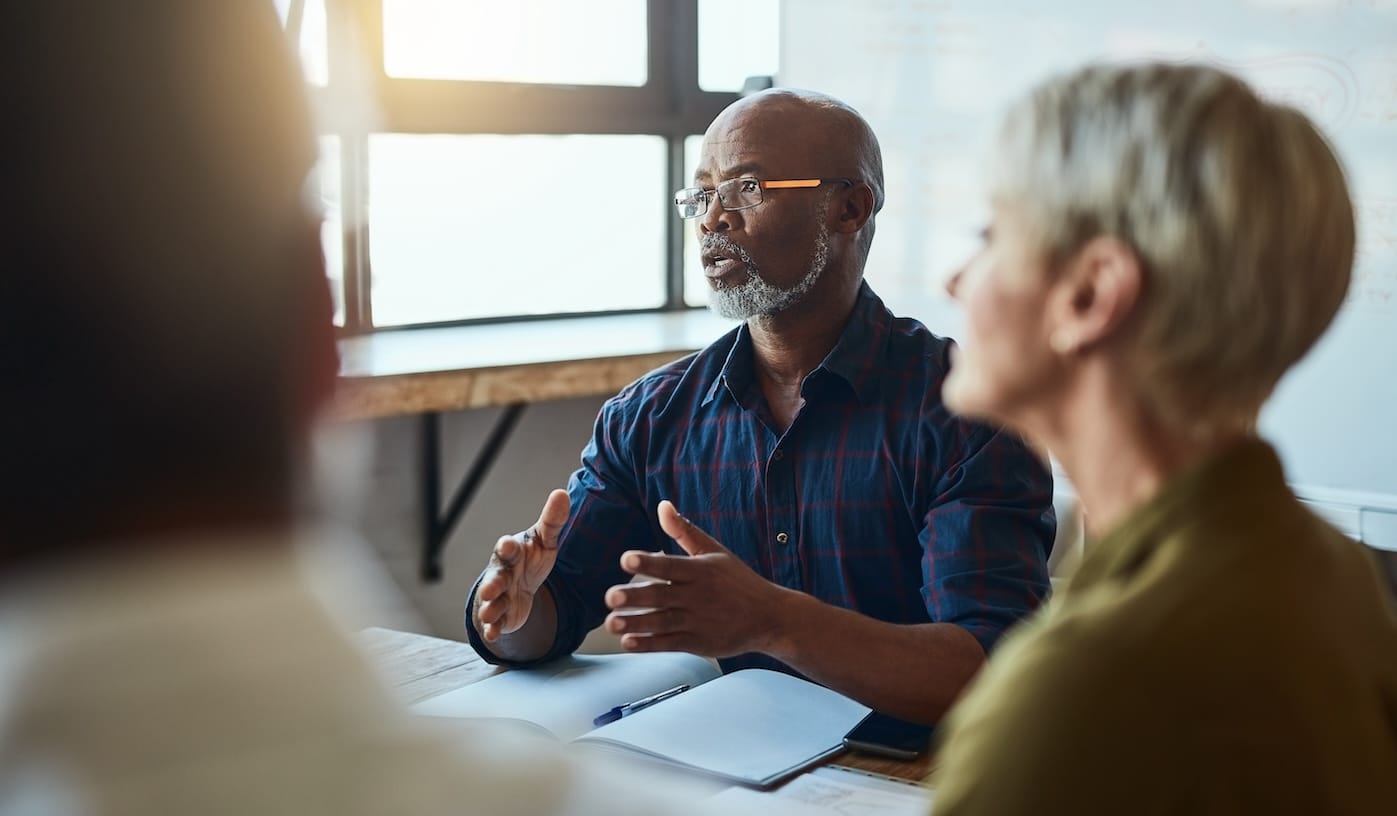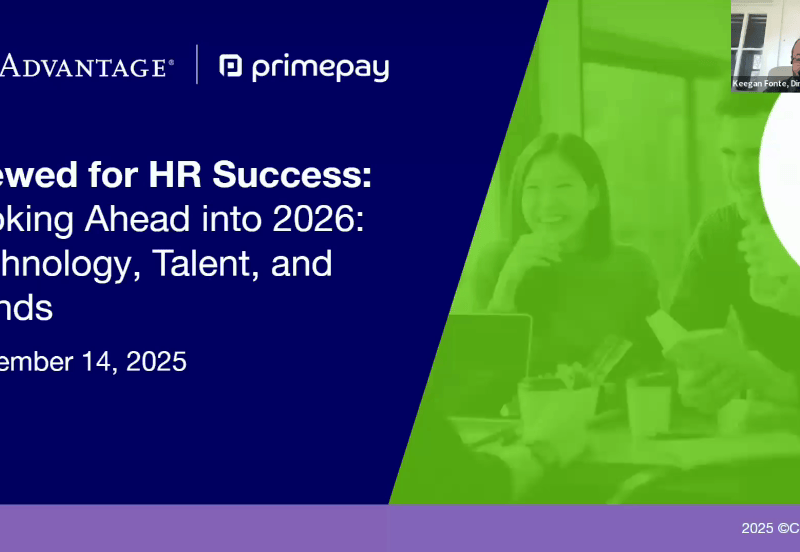We all know that business adaptability and operational efficiency are important. According to Deloitte, 85% of executives believe that “organizations should create more agile ways of organizing work to swiftly adapt to market changes.”
A robust gap analysis is the foundation for doing just that.
In fact, a well-executed skills gap analysis helps your organization not only respond quickly to new challenges (like market shifts or technological disruptions) by developing a workforce ready to pivot, but also helps increase employee satisfaction and productivity.
Below, we discuss the benefits of performing a gap analysis, how to identify a skills gap, and ways to use your data to improve organizational success.
What is a Skills Gap Analysis?
A skills gap analysis is a method used by organizations to identify the difference between the skills their workforce currently has and the skills needed to meet business goals.
Think of it as taking inventory. By knowing your team’s strengths and areas for growth, you’ll help build a blueprint for staying competitive or adapting to new challenges.
Whether you’re an HR leader planning for long-term talent development or a finance leader aligning training budgets with ROI, a skills gap analysis helps set the stage for better workforce planning and stronger business outcomes.
Key Terms to Know:
- HR gap analysis: A broader assessment that includes not just skills, but workforce planning and hiring needs.
- Training gap analysis: A focused evaluation of the skills employees lack and how training can address those gaps.
- Skills gap assessment: Another term for the overall analysis process of identifying missing or underdeveloped skills.
Benefits of Performing a Gap Analysis
Conducting a skills gap analysis is a strategic move that offers measurable benefits for your organization, employees, and overall business performance. Sounds like a win-win, right?
Below are a few reasons why performing a gap analysis should be a priority (if it isn’t already).
- Align workforce skills with business goals: A gap analysis helps you pinpoint whether your workforce has the skills to achieve organizational objectives. By aligning training and hiring efforts with business goals, you can focus resources on building a team ready to tackle current and future challenges. But don’t just take it from us; 87% of executives say their companies either have a skills gap now or expect to within a few years, and aligning workforce capabilities is a top priority to address this issue.
- Boost productivity and performance: Closing skills gaps ensures your employees are equipped to work efficiently and confidently. Whether mastering new software or improving leadership capabilities, a skilled workforce leads to higher-quality outcomes and fewer costly mistakes.
- Plan for the future: Skills gap analyses, or the broader HR gap analysis, are crucial for future-proofing your workforce. As we know, workforce needs constantly evolve with industry trends and technology. In what they call “The Reskilling Revolution,” The World Economic Forum predicts that 50% of all employees will need reskilling and that 1.1 billion jobs are liable to be radically transformed in the next decade.
- Optimize training investments: Rather than wasting training budgets on guesswork, a skills gap assessment enables data-driven decisions. Instead of assuming which programs to implement, you can use data-rich insights to focus on the most impactful areas and ensure your training budget delivers measurable ROI.
- Improve employee engagement and retention: Employees want to feel valued and see growth opportunities. Focusing on upskilling your workforce does just that – and more. In fact, research from LinkedIn’s Workforce Learning Report found that 94% of people would stay longer at a company that invested in their learning and development. And, overall, companies with a strong learning culture benefit from that retention, too, as it builds a healthier management pipeline and better workplace culture.
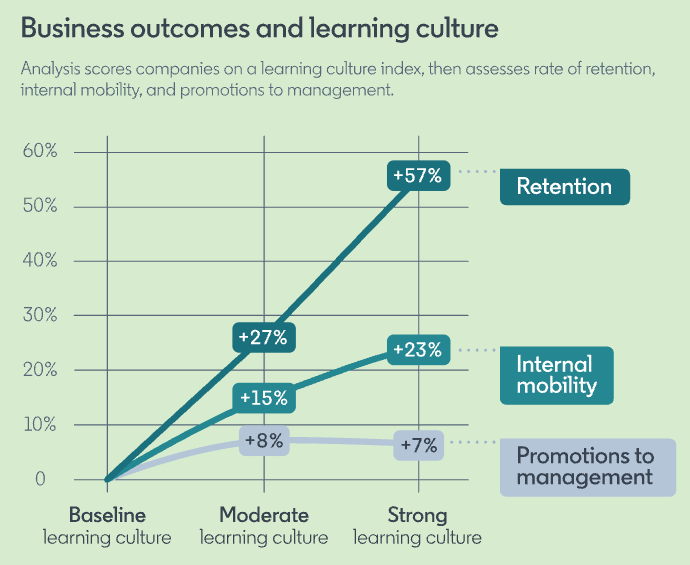
It’s clear that learning and development have a strong impact on retention efforts and the employee experience.
How to Conduct a Gap Analysis
Performing a skills gap analysis involves several steps, and we’ll be honest – the first go-around, it’ll seem time-consuming and slow to start.
Barry Marshall, founding partner of P5, explains: “This is critical work for any organization that wants to increase its ability to pivot and adapt to constantly changing market conditions. It is time-consuming, but its impact is broad. You will find applications for headcount planning, job descriptions, career mapping, succession planning, and so much more. So, to get things started, I always recommend piloting it first with a smaller part of the organization so you can learn and adapt your approach as you go.”
However, once you’ve conducted a few gap analyses, you’ll understand which steps to rework to best fit your schedule, goals, and company.
Here’s an overview to help you conduct an effective gap analysis for your organization.
1. Define Your Goals
Before diving into the skills gap assessment, clarify what you’re trying to achieve.
Are you preparing for a major project, adapting to new technology, or addressing industry changes?
For example:
- A manufacturing company transitioning to automation may focus on assessing technical skills among its workforce.
- An agency planning to launch a company rebrand may focus on assessing storytelling and design skills among its team.
- A marketing team looking to improve its social presence may focus on assessing digital marketing skills, strategy, and partnerships among its people.
2. Identify the Skills Needed
Determine the skills required to meet your goals.
These skills may include:
- Technical skills, like software proficiency or machine operation.
- Soft skills, like communication or problem-solving.
- Emerging skills, like AI literacy or cybersecurity expertise.
To get started, review job descriptions, consult with department leaders, and research industry trends. Tools like the U.S. Department of Labor’s O*NET Online can provide insight into essential skills for specific roles.
Note that you’ll need to cross-collaborate with team leaders and project managers to understand exactly what skills are needed and what processes look like to develop a full list of necessary skills.
3. Assess Current Workforce Skills
Evaluate the skills your employees already have to better understand the gaps (in the next step!) and help you pivot if need be.
You can use:
- Surveys and self-assessments: Employees can rate their proficiency in key skills.
- Manager evaluations: Supervisors can provide insight into team strengths and weaknesses.
- Skills testing or certifications: Platforms like LinkedIn Learning, Skillsoft, or your learning management tool can assess employees’ capabilities.
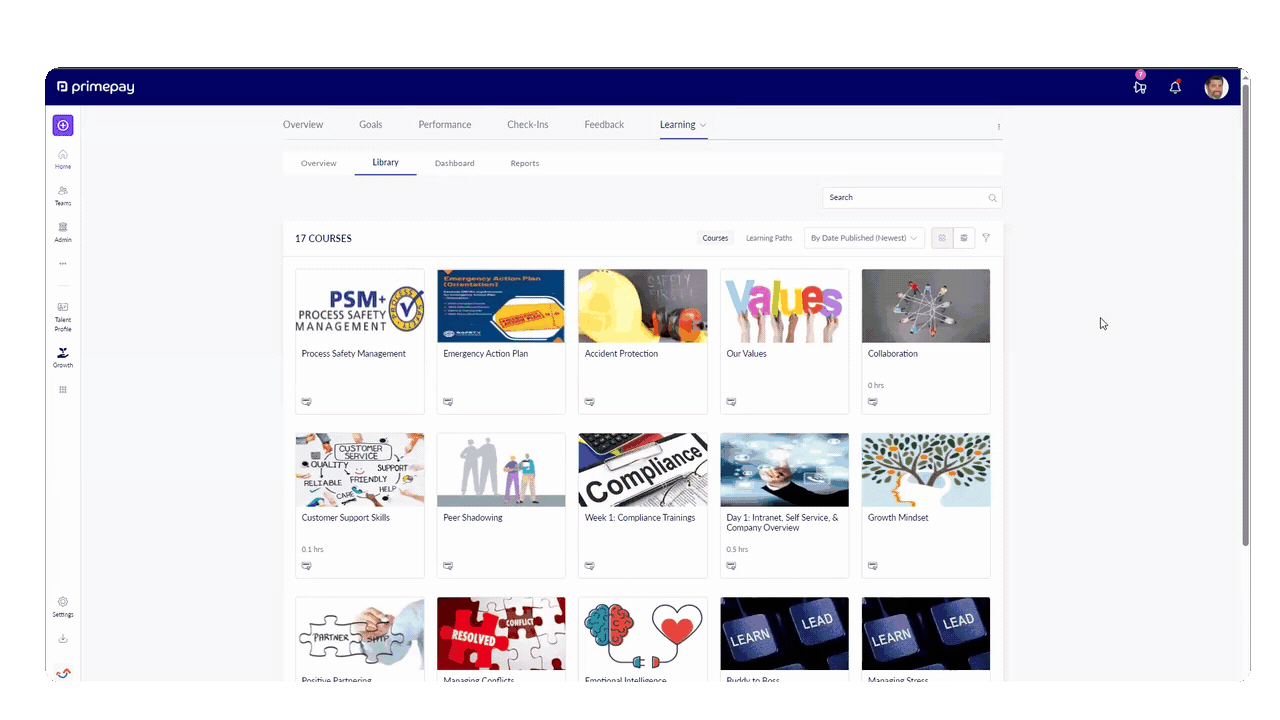
PrimePay’s LMS is a user-friendly, scalable solution that allows you to easily tailor training programs to your teams’ needs and professional goals.
4. Analyze the Gaps
Compare the skills you need with the skills your team currently possesses.
Identify:
- Skill shortages: Areas where employees lack proficiency.
- Skill surpluses: Capabilities where your team excels and can share knowledge.
- Future gaps: Skills that will become essential based on trends or strategic plans.
For instance, if your HR gap analysis reveals that mid-level managers lack leadership skills, you might prioritize training programs for this group.
TIP: It’s also important to consider employee workload. Create a general (but honest) workforce capacity plan for your teams to help retain top talent and prevent voluntary turnover. You’re doing this analysis to maximize team output and upskill your people – don’t inadvertently drive them away by overworking them.
5. Develop an Action Plan
Once you’ve identified gaps, create a plan to address them.
This plan might include:
- Training programs: Upskill current employees through workshops, online courses, or certifications.
- Hiring new talent: Recruit candidates with the necessary skills to fill gaps quickly.
- Mentorship or cross-training: Leverage internal expertise by pairing skilled employees with those who need development. Mentorship programs benefit both the mentor and mentee, as Kevin McKay, VP of Sales and Operations at Flash Global. He explains, “For me, it’s a rewarding way to give back, share knowledge, and develop leadership skills, creating a culture of continuous learning and growth.”
6. Track Progress and Adjust
Regularly measure the effectiveness of your plan by tracking metrics such as employee performance, retention rates post-training, and the ROI of training investments.
Tools like performance management software, employee surveys, or your LMS can help you monitor progress and refine your strategy.
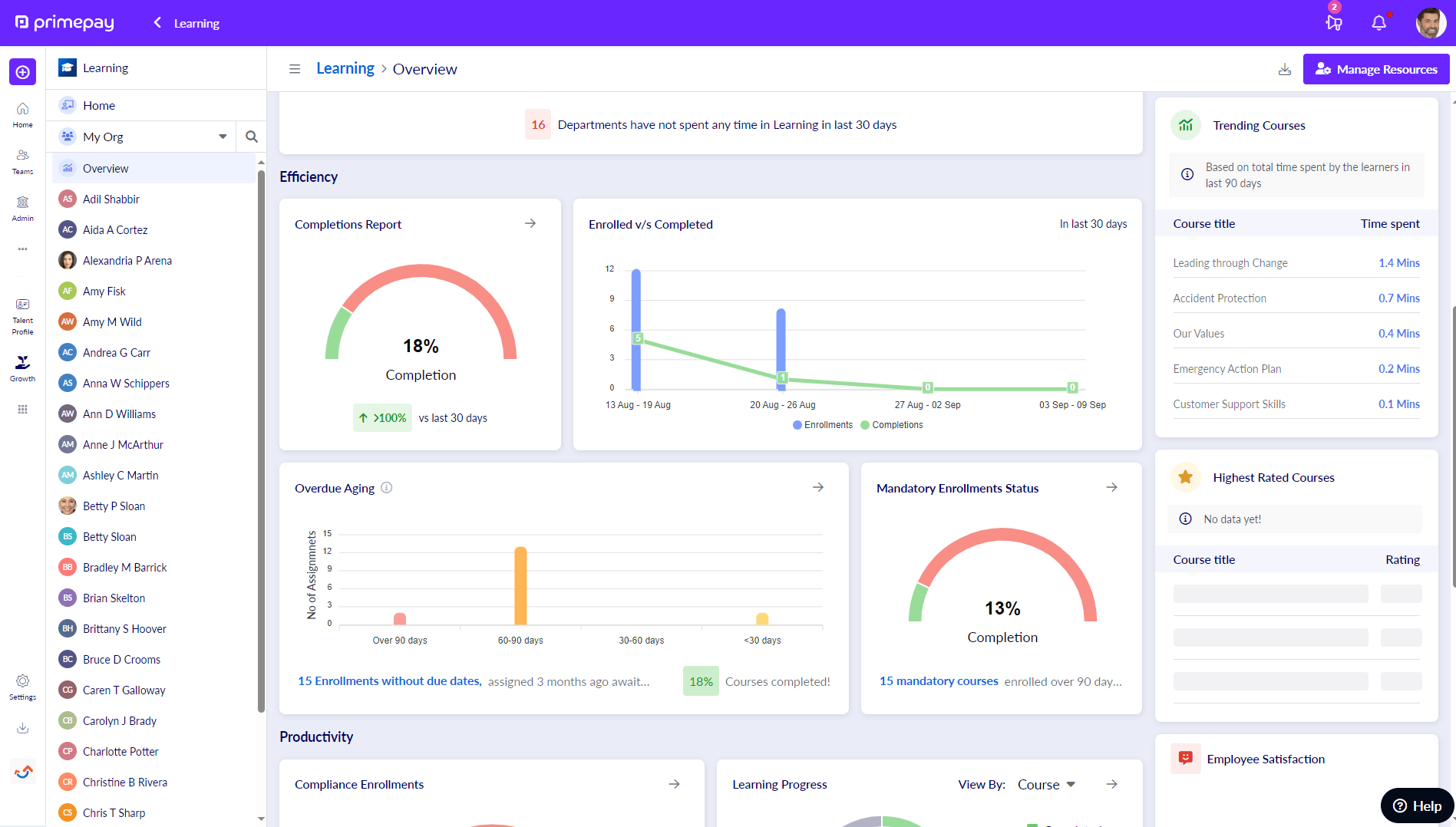
The right LMS will help you track completion rates and understand employees’ upskilling interests to better adjust your processes.
How to Use Data from a Gap Analysis
Once you’ve conducted a skills gap analysis, the next step is turning those insights into action. The gathered data should guide your workforce planning, training programs, and long-term business strategies.
Here’s how to make the most of your gap analysis data.
1. Prioritize Critical Skill Gaps
It’s important to remember that not all skill gaps need to be addressed at once. Use your analysis to identify gaps that have the most significant impact on your organization’s goals.
For instance, focus on technical gaps that hinder immediate productivity (such as software proficiency for remote teams) or prioritize leadership gaps if succession planning is imperative.
Example: If your analysis shows that only 30% of employees are proficient in data analytics but 70% of upcoming projects require it, you’ll want to prioritize training in analytics tools.
2. Develop Targeted Training Programs
Use your gap analysis data to design training initiatives that address specific needs.
Consider:
- Group training sessions for common gaps.
- Individualized learning plans for role-specific skills.
- Upskilling programs to prepare for future needs.
Example: A financial firm that identified a training gap in compliance regulations implemented a series of workshops and e-learning modules, resulting in a 25% reduction in compliance errors within six months.
3. Refine Hiring Strategies
For gaps that can’t be resolved through training alone, adjust your hiring practices.
Use your analysis to update job descriptions to reflect your needed skills, partner with recruiters specializing in hard-to-fill roles, and develop internships or apprenticeship programs to cultivate talent.
Example: A tech company used its analysis to identify a shortage of cybersecurity expertise and adjusted its recruitment strategy to target professionals with Certified Information Systems Security Professional (CISSP) credentials.

With PrimePay’s Applicant Tracking System, you can quickly see which candidates have the preferred training and qualifications for your workforce plans.
4. Enhance Workforce Planning
Skills gap data provides valuable insights for workforce planning.
Use it to:
- Align workforce development with long-term business goals.
- Plan for roles that will become critical as technology and industry demands evolve.
- Forecast future training and recruitment budgets.
Example: A healthcare provider used gap analysis data to predict an increasing need for telehealth expertise. They proactively upskilled their team in virtual patient care and onboarded additional support staff trained in telehealth software.
5. Measure ROI on Training and Development
Track the return on investment (ROI) of your gap-closing initiatives.
Evaluate increased employee performance metrics, improvements in retention rates and employee satisfaction, and cost savings or revenue growth tied to newly developed skills.
Example: Companies that invest in learning and development see 218% higher income per employee than those that don’t. Use this type of benchmarking to gauge your efforts’ success.
6. Foster a Culture of Continuous Improvement
Don’t treat your skills gap analysis as a one-time event.
Use the data to:
- Create a feedback loop where employees and managers regularly reassess skills.
- Encourage ongoing learning and adaptability within your workforce.
- Stay ahead of industry trends by monitoring emerging skill needs.
Example: Companies like Google and Microsoft conduct regular gap analyses as part of their continuous performance management strategies, ensuring they remain innovation leaders.
Improve Organizational Success with Your Gap Analysis
The insights, benefits, and steps above should solidify the need for a gap analysis for your company. But if that wasn’t enough, here’s the cherry on top – it’s low cost, high reward.
Yes, it can take significant time at first, but conducting a skills gap assessment is something that can be done in-house and on your schedule. And by doing so regularly (whatever that means for your team or company), you’ll time it right to get the most out of your results to achieve organizational success.


